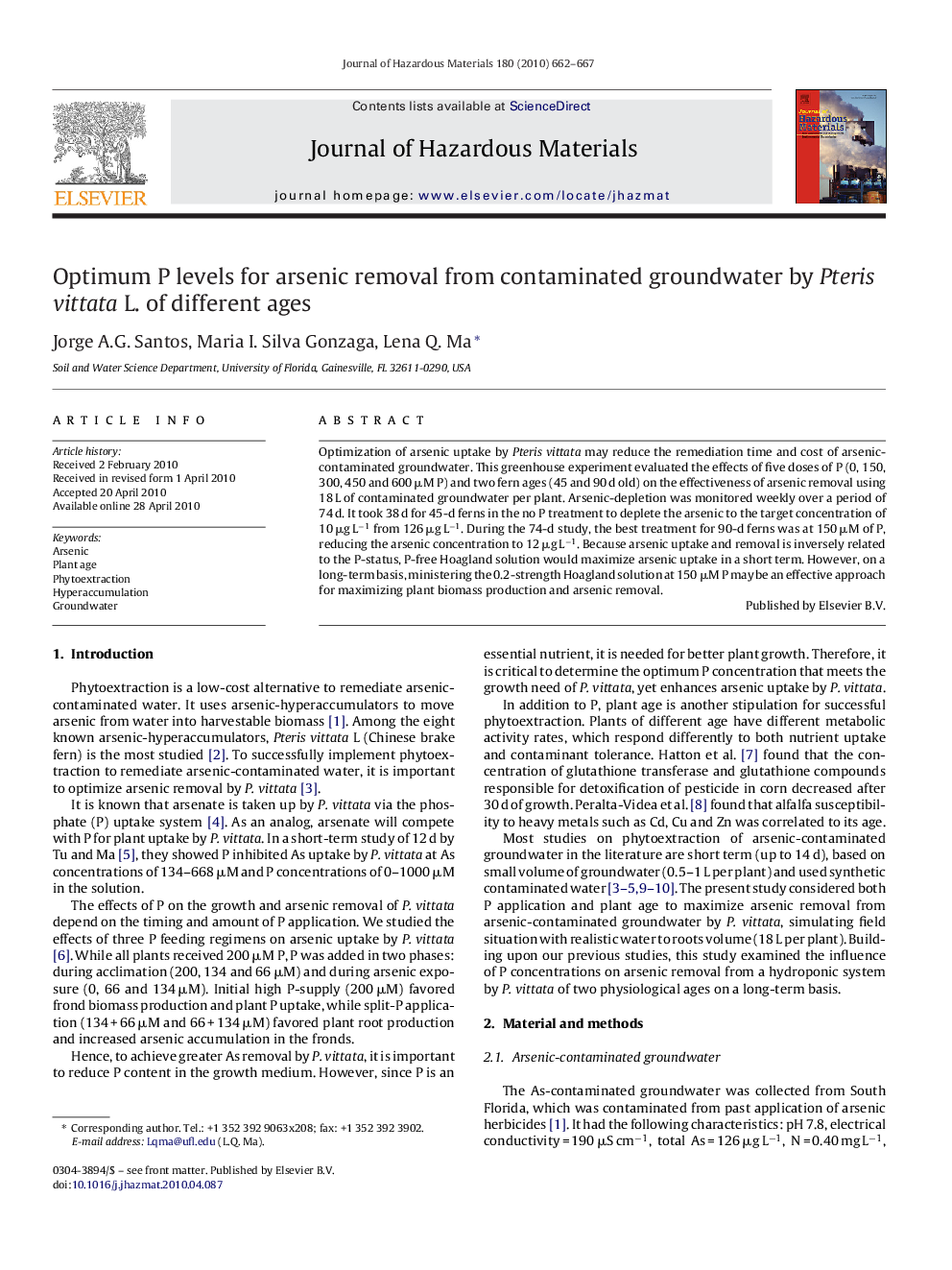| Article ID | Journal | Published Year | Pages | File Type |
|---|---|---|---|---|
| 580111 | Journal of Hazardous Materials | 2010 | 6 Pages |
Abstract
Optimization of arsenic uptake by Pteris vittata may reduce the remediation time and cost of arsenic-contaminated groundwater. This greenhouse experiment evaluated the effects of five doses of P (0, 150, 300, 450 and 600 μM P) and two fern ages (45 and 90 d old) on the effectiveness of arsenic removal using 18 L of contaminated groundwater per plant. Arsenic-depletion was monitored weekly over a period of 74 d. It took 38 d for 45-d ferns in the no P treatment to deplete the arsenic to the target concentration of 10 μg Lâ1 from 126 μg Lâ1. During the 74-d study, the best treatment for 90-d ferns was at 150 μM of P, reducing the arsenic concentration to 12 μg Lâ1. Because arsenic uptake and removal is inversely related to the P-status, P-free Hoagland solution would maximize arsenic uptake in a short term. However, on a long-term basis, ministering the 0.2-strength Hoagland solution at 150 μM P may be an effective approach for maximizing plant biomass production and arsenic removal.
Related Topics
Physical Sciences and Engineering
Chemical Engineering
Chemical Health and Safety
Authors
Jorge A.G. Santos, Maria I. Silva Gonzaga, Lena Q. Ma,
